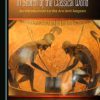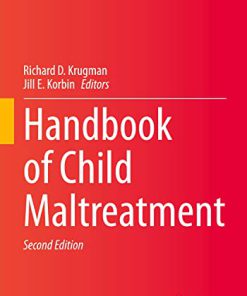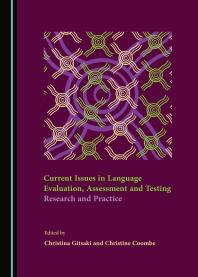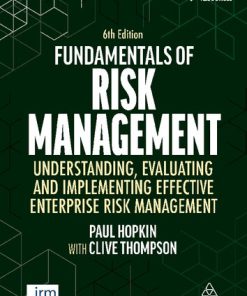Multicultural Child Maltreatment Risk Assessment Effective Evaluation for Diverse Populations 1st Edition by Vassilia Binensztok ISBN 0367464047 9780367464042
$50.00 Original price was: $50.00.$25.00Current price is: $25.00.
Multicultural Child Maltreatment Risk Assessment Effective Evaluation for Diverse Populations 1st Edition by Vassilia Binensztok – Ebook PDF Instant Download/Delivery: 0367464047 ,9780367464042
Full download Multicultural Child Maltreatment Risk Assessment Effective Evaluation for Diverse Populations 1st Edition after payment

Product details:
ISBN 10: 0367464047
ISBN 13: 9780367464042
Author: Vassilia Binensztok
The book presents a new model for evaluating families that includes cultural competence, a conceptualization of adequate parenting, and strategies for reflective decision making. Chapters address a range of factors including race, ethnicity, religion, gender, and sexuality. Ten case studies, each including discussion prompts, challenge the reader to apply forensic evaluation techniques for effective and ethical decision making in complex and ambiguous cases. Both experienced mental health providers and students will come away from the book with a deeper understanding of child maltreatment and its effects, models and modes of assessment, and factors that place families at greater risk.
Multicultural Child Maltreatment Risk Assessment Effective Evaluation for Diverse Populations 1st Edition Table of contents:
Chapter One Introduction to Multicultural Child Maltreatment Risk Assessment
Purpose of Risk Assessment
Benefits of Risk Assessment
Risk Assessment Goals
Challenges in Risk Assessment
Symptoms vs Incidents
Comorbidity
Base Rate Fallacy
Provider Knowledge and Subjectivity
Cultural Factors
Assessment Paradigms
Consensus-Based vs Actuarial Models
Need for Multicultural Assessment
Case Study
Case Study Discussion Prompts
Summary
References
Chapter Two Defining Child Maltreatment
Differing Views on Child Maltreatment
Discipline vs Maltreatment
Parental Intent
US Child Maltreatment Laws
Forms of Maltreatment
Physical Abuse
Sexual Abuse
Psychological Abuse
Neglect
Abandonment
Unsafe Living Environment
Cultural Factors in Maltreatment
Cultural Relativism vs Universalism
Harmful Cultural Practices
Female Genital Mutilation
Son Preference
Honor Killings
Virginity Testing
Child Marriage
Accepted Cultural Practices and Grey Areas
Sleeping Arrangements
Child Discipline
Cultural Practices
Case Study
Case Study Discussion Prompts
Summary
References
Chapter Three Effects of Child Maltreatment
Type I vs Type II Traumas
Effects of Child Maltreatment
Neuropsychological Effects
Short-Term Effects of Child Maltreatment
Physical Injuries
Emotional Disturbances
Cognitive Disturbances
Behavioral Problems
Mental Health Diagnoses
Attachment Disorders
Developmental Trauma Disorder
Long-Term Effects of Child Maltreatment
The Adverse Childhood Experiences (ACE) Study
Adult Psychological Manifestations of Adverse Childhood Experiences
Adult Physical Manifestations of Adverse Childhood Experiences
Cycle of Violence
Socioeconomic Cost of Child Maltreatment
Cultural Intersection
Case Study
Case Study Discussion Prompts
Summary
References
Chapter Four Families at Risk
Family Risk Factors
Parent Characteristics
Parent Mental Health
Parent Personality and Functioning
Parent Substance Use
Parent Attitudes
Family Structure and Stability
Parent’s History of Maltreatment
Parent’s History of Violence
Prior Child Welfare History
Family Cultural Factors
Child Characteristics
Child Age
Child Gender
LGBTQ Status
Child Temperament, Mental Health, and Neurodevelopment
Environmental Characteristics
Socioeconomic Status
Neighborhood Risk Factors
Social Isolation
Family Protective Factors
Parent Characteristics
Family Cultural Factors
Child Characteristics
Environmental Characteristics
Social Support
Resources
Weighing Risk and Protective Factors
Case Study
Case Study Discussion Prompts
Summary
References
Chapter Five Assessing Families for Risk
The Bioecological Model
Forms of Assessment
Qualitative Assessment
Standardized Assessment
Observational Assessment
Self-Report Assessment
Continuous Assessment
Consensus-Based vs Actuarial Assessment
Sources of Information
Obstacles to Assessment
Assessing Parent Factors
Assessing Child Factors
Assessing Environmental Factors
Assessment Instruments
Child Abuse Potential (CAP) Inventory
Brigid Collins Risk Screener (BCRS)
Caldwell HOME (Home Observation for Measurement of the Environment) Inventory for Infants
Parenting Stress Index, Short Form (PSI/SF)
Instrument for Identification of Parents at Risk for Child Abuse and Neglect (IPARAN)
Child Abuse Risk Assessment Scale
Case Study
Case Study Discussion Prompts
Summary
References
Chapter Six Assessing Children for Maltreatment
Symptoms vs Incidents
Forms of Assessment
Sources of Information
Records
Children and Parents
Collateral Sources
The Bioecological Approach to Information Gathering
Evaluating Parents
Parent Instruments
Evaluating Children
Child Instruments
Interviewing Children
Evaluating Environment
Environment Instruments
Obstacles to Assessment
Case Study
Case Study Discussion Prompts
Summary
References
Chapter Seven Multicultural Considerations in Assessment
Race, Culture, and Ethnicity
Bias in Assessment
Cultural Disparities in Child Welfare
The Multicultural Ecological Model
The Intersectional Perspective
Stressors Associated with Culture
LGBTQ Concerns in Child Maltreatment
LGBTQ Youth and Maltreatment
LGBTQ Youth as a Sexual Minority
Intersection of LGBTQ and Ethnic Culture
Multicultural Assessment Considerations
Interacting with Families
Language Barriers
Disclosure of Abuse
Views on Parenting and Abuse
Symptom Expression
Becoming Culturally Competent
Case Study 1
Case Study 1 Discussion Prompts
Case Study 2
Case Study 2 Discussion Prompts
Summary
References
Chapter Eight The Adequate Parent
Progression of Social Views on Childhood and Parenting
Toward an Understanding of Adequate Parenting
Winnicott and the Good Enough Mother
Beavers Systems Model of Family Functioning
Gottman and the Good Enough Marriage
Budd and Minimal Parenting Standards
Assessing Adequate Parenting
Care
Safety
Parent Functioning
Case Study
Case Study Discussion Prompts
Summary
References
Chapter Nine Decision Making in Child Maltreatment Risk Assessment
Decision Making Processes
Decision Making Models
ACTION for Child Protection SAFE Model
Structured Decision Making Model (SDM)
Signs of SafetyTM Model
Ethics and Risk Assessment
Consideration of Children’s Rights
Best Practices in Child Maltreatment Risk Assessment
Ethics
Reflective Decision Making
Cultural Competence
Adequate Parenting Standards
Best Interest of Children
Reducing Ambiguity
Case Study
Case Study Discussion Prompts
People also search for Multicultural Child Maltreatment Risk Assessment Effective Evaluation for Diverse Populations 1st Edition:
parental risk factors for child maltreatment
child maltreatment questions
child maltreatment quiz
race and bias in child maltreatment diagnosis and reporting
risk of maltreatment
Tags: Vassilia Binensztok, Multicultural Child Maltreatment, Risk Assessment, Diverse Populations
You may also like…
Business & Economics - Management & Leadership
Assessment and Communication of Risk 1st Edition Eric Liberda Timothy Sly
Uncategorized
Effective Intercultural Evangelism Good News in a Diverse World 1st Edition W Jay Moon W Bud Simon
Business & Economics - Mathematical Economics
Politics & Philosophy - Social Sciences
Uncategorized
Business & Economics - Management & Leadership
Business & Economics - Management & Leadership
Assessment and Communication of Risk A Pocket Text for Health and Safety Professionals Eric Liberda












